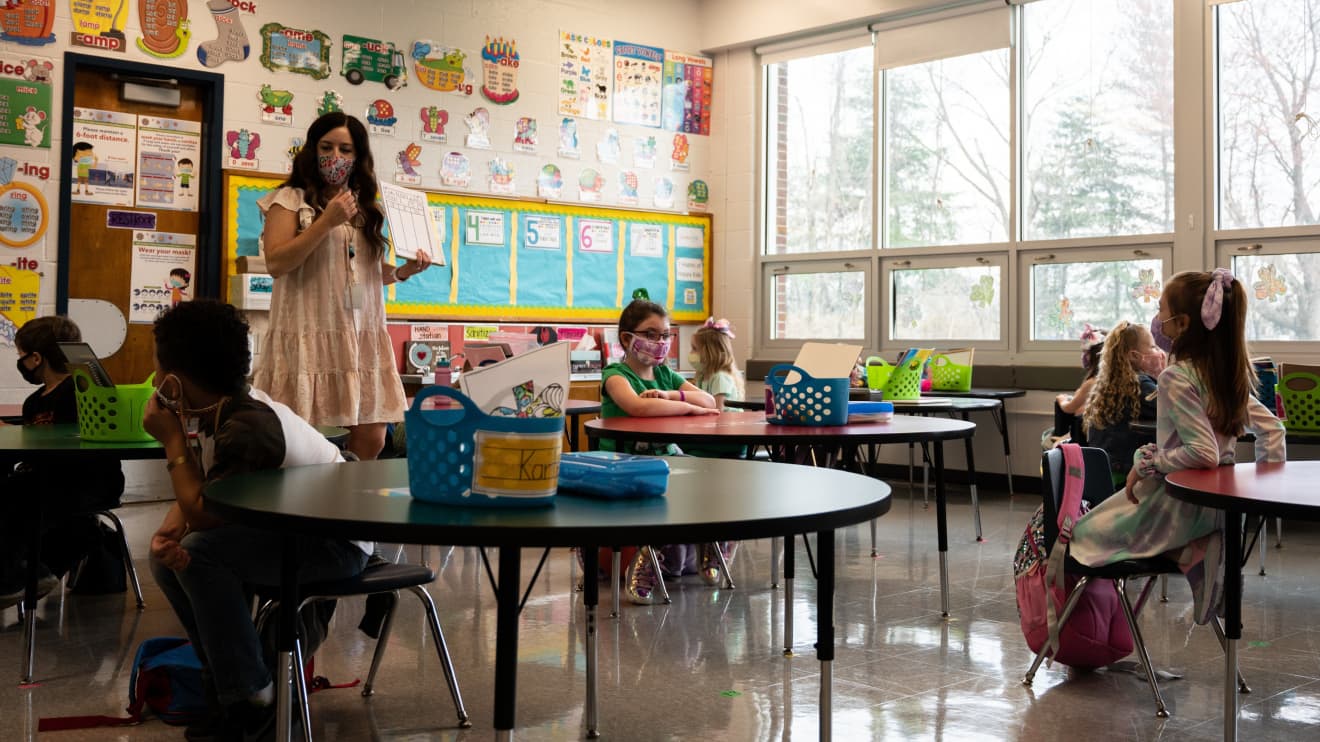This post was originally published on this site

States are set to receive $81 billion dedicated to safely reopening schools from the $1.9 trillion stimulus package, President Joe Biden was expected to announce during a summit on school reopening hosted by the Department of Education on Wednesday.
In total, the American Rescue Plan provides $122 billion in relief for pre-K-12 schools to “to reopen safely and address the academic, social, emotional, and mental health needs of their students,” the Department of Education said in a statement ahead of the summit.
The remaining $41 billion “will become available after states submit the plans they are developing and implementing” for safely reopening schools, the statement said.
During his campaign, Biden promised to reopen the majority of K-8 schools during his first 100 days in office. But ultimately the decision to reopen schools for in-person learning falls to state and local government officials.
“
In total, the American Rescue Plan provides $122 billion in relief for pre-K-12 school to reopen for in-person learning
”
As of Wednesday, some 47% of schools serving fourth-graders and 46% of schools serving eighth-graders across the country offer daily in-person learning, according to a report published by the National Center for Education Statistics.
The Biden administration is attempting to pave the way for schools to reopen safely by distributing federal funds that could be used to upgrade classrooms to promote social distancing, among other health measures.
“
In communities where case levels are high, the CDC advises that high school and middle school students maintain at least six feet of distance
”
The U.S. Centers for Disease Control and Prevention recently released updated guidance that calls for students in classrooms where everyone is wearing a mask to sit at least three-feet apart. The CDC had previously advised six feet of space between students.
In communities where case levels are high, the CDC advises that high school and middle school students maintain at least six feet of distance, CDC Director Dr. Rochelle Walensky said Wednesday during the summit. Elementary school students can continue to maintain at least three feet of distance regardless of transmission levels, she added.
The new guidelines could also help Biden achieve his goal if more students are allowed in classrooms. It might also give a financial lift to some parents of children who have been learning remotely, according to CDC data and the view of some experts.
However, Randi Weingarten, president of the American Federation of Teachers, the nation’s second-largest teachers union, is “not convinced that the evidence supports changing physical distancing requirements at this time,” she said in a letter to Secretary of Education Miguel Cardona.
“Our concern is that the cited studies do not identify the baseline mitigation strategies needed to support 3 feet of physical distancing,” she said. “Moreover, they were not conducted in our nation’s highest-density and least-resourced schools, which have poor ventilation, crowding and other structural challenges.”

